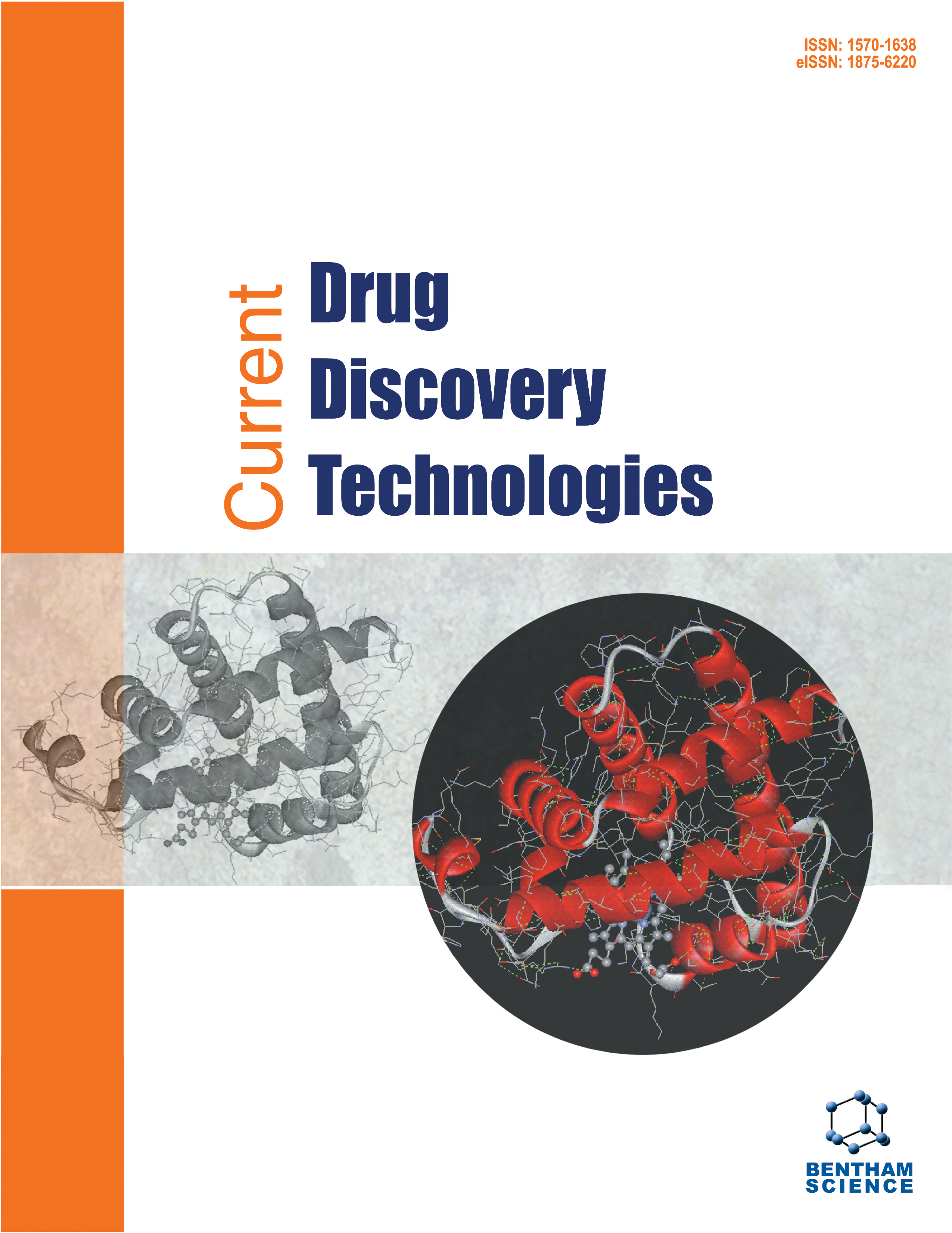- Home
- A-Z Publications
- Current Drug Discovery Technologies
- Previous Issues
- Volume 1, Issue 3, 2004
Current Drug Discovery Technologies - Volume 1, Issue 3, 2004
Volume 1, Issue 3, 2004
-
-
The Oxazolomycins: A Structurally Novel Class of Bioactive Compounds
More LessAuthors: Mark G. Moloney, Paul C. Trippier, Muhammad Yaqoob and Zhaoyang WangOxazolomycin, first isolated in 1985, is a novel bioactive compound, exhibiting potent antiviral, antibacterial and cytotoxic activity, and is now known to be the parent of a wider class of compounds. The broad-spectrum activity of oxazolomycin has been attributed to its protonophoric properties. This review outlines the isolation, structural determination, biosynthesis, bioactivity, biological mode of action and synthesis o Read More
-
-
-
Efficient Optimization Strategy for Marginal Hits Active Against abl Tyrosine Kinases
More LessPrimary high-throughput screening of commercially available small molecules collections often results in hit compounds with unfavorable ADME / Tox properties and low IP potential. These issues are addressed empirically at follow-up lead development and optimization stages. In this work, we describe a rational approach to the optimization of hit compounds discovered during screening of a kinase focused library against abl ty Read More
-
-
-
Strategies for Compound Selection
More LessAuthors: Marius M. Olah, Cristian G. Bologa and Tudor I. OpreaIn-house pharmaceutical collections are no longer sufficient for sampling chemical spaces. As novel bioactive chemotypes are successfully identified by virtual and high -throughput screening, the ability to rapidly sift through large numbers of chemicals prior to acquisition or experiment is required. Strategies for compound selection include some of the following steps: 1.) database assembly ('in silico' inventory); 2a.) stru Read More
-
-
-
Prediction of Glomerular Filtration Rate From Body Cell Mass and Plasma Creatinine
More LessThe gold standards for the measurement of glomerular filtration rate (GFR) are inulin clearance and radioisotopic methods. However, creatinine clearance is the most used test to evaluate GFR in clinical practice. Its adequacy is questionable, since its repeatability is quite poor, mainly due to errors in the collection of urine. The aim of this study was to evaluate a new method to predict GFR from the body cell mass (BCM) and Read More
-
-
-
Applications of Multi-Angle Laser Light-Scattering Detection in the Analysis of Peptides and Proteins
More LessAuthors: Alexis Oliva, Matias Llabres and Jose B. FarinaThe proliferation of new peptides and proteins requiring characterisation is a direct result of recent advances in genomics and proteomics, but protein aggregation is particular problem in the biotechnology industry, where aggregation is encountered throughout the lifetime of a therapeutic protein, including during refolding, purification, sterilization, shipping, and storage process. To ensure that it meets quality standards, the Read More
-
Volumes & issues
-
Volume 22 (2025)
-
Volume 21 (2024)
-
Volume 20 (2023)
-
Volume 19 (2022)
-
Volume 18 (2021)
-
Volume 17 (2020)
-
Volume 16 (2019)
-
Volume 15 (2018)
-
Volume 14 (2017)
-
Volume 13 (2016)
-
Volume 12 (2015)
-
Volume 11 (2014)
-
Volume 10 (2013)
-
Volume 9 (2012)
-
Volume 8 (2011)
-
Volume 7 (2010)
-
Volume 6 (2009)
-
Volume 5 (2008)
-
Volume 4 (2007)
-
Volume 3 (2006)
-
Volume 2 (2005)
-
Volume 1 (2004)
Most Read This Month
Article
content/journals/cddt
Journal
10
5
false
en


